Nick Turse reports on a humanitarian catastrophe that has only begun to unfold and has already uprooted more people than during all of World War II.
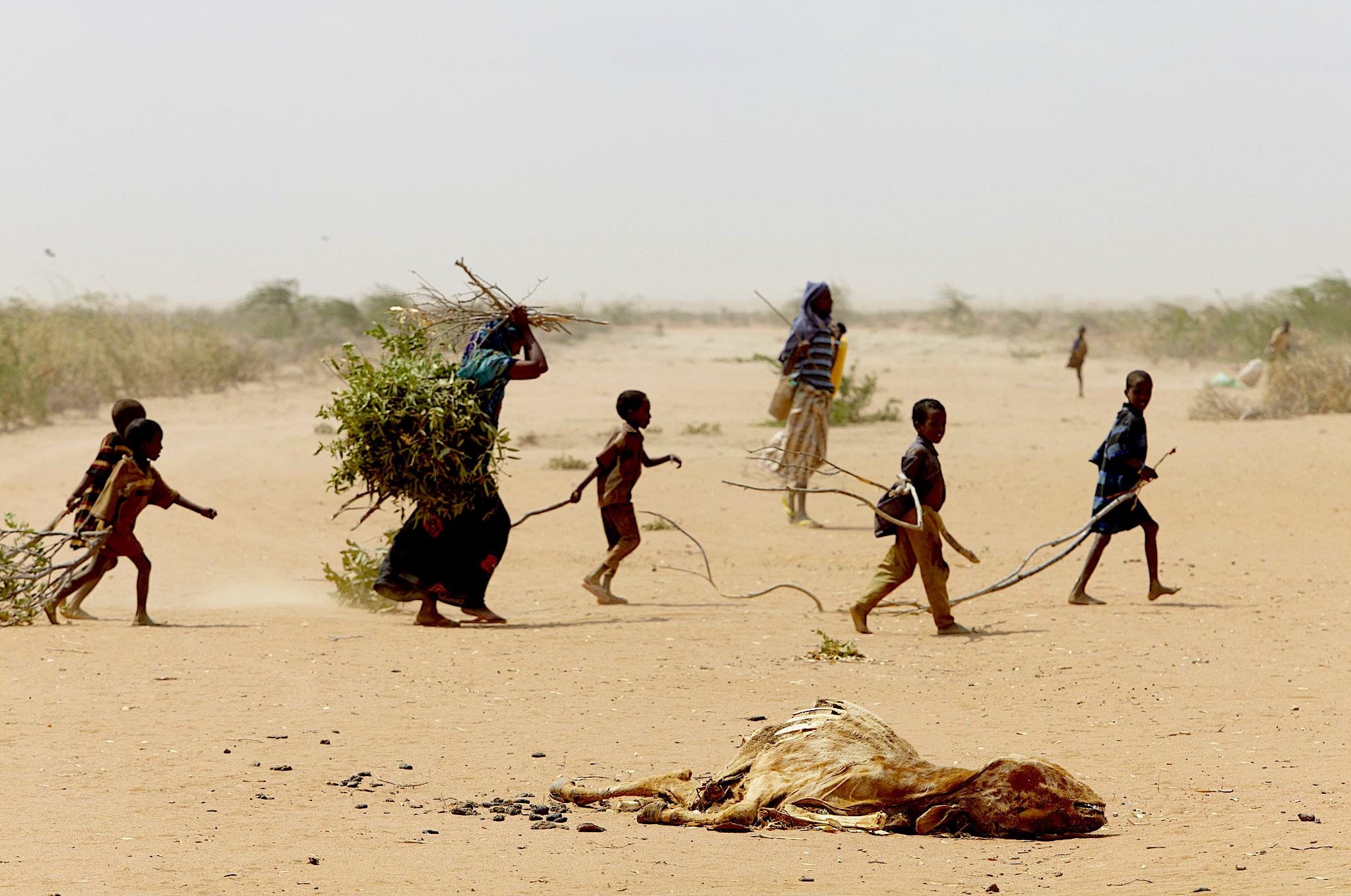
On the outskirts of Kenya’s Dadaab refugee complex, a family gathers sticks and branches for firewood and making a shelter amid the carcasses of animals killed in the drought, July 25, 2011. (Andy Hall/Oxfam)
 I saw them for only a few seconds. One glimpse and they were gone. The young woman wore a brown headwrap, a yellow short-sleeved shirt, and a long pink, red, and blue floral-patterned skirt. She held the reins of the donkey pulling her rust-pink cart. Across her lap lay an infant. Perched beside her at the edge of the metal wagon was a young girl who couldn’t have been more than 8. Some firewood, rugs, woven mats, rolled-up clothing or sheets, a dark green plastic tub, and an oversized plastic jerry can were lashed to the bed of the cart. Three goats tied to the rear of it ambled along behind.
I saw them for only a few seconds. One glimpse and they were gone. The young woman wore a brown headwrap, a yellow short-sleeved shirt, and a long pink, red, and blue floral-patterned skirt. She held the reins of the donkey pulling her rust-pink cart. Across her lap lay an infant. Perched beside her at the edge of the metal wagon was a young girl who couldn’t have been more than 8. Some firewood, rugs, woven mats, rolled-up clothing or sheets, a dark green plastic tub, and an oversized plastic jerry can were lashed to the bed of the cart. Three goats tied to the rear of it ambled along behind.
They found themselves, as I did, on a hot, dusty road slowly being choked by families who had hastily hitched up their donkeys and piled whatever they could — kindling, sleeping mats, cooking pots — into sun-bleached carts or bush taxis. And they were the lucky ones. Many had simply set out on foot. Young boys tended small herds of recalcitrant goats. Women toted dazed toddlers. In the rare shade of a roadside tree, a family had stopped and a middle-aged man hung his head, holding it in one hand.
Earlier this year, I traveled that ochre-dirt road in Burkina Faso, a tiny landlocked nation in the African Sahel once known for having the largest film festival on the continent. Now, it’s the site of an unfolding humanitarian catastrophe. Those people were streaming down the main road from Barsalogho about 100 miles north of the capital, Ouagadougou, toward Kaya, a market town whose population has almost doubled this year, due to the displaced.
Across the country’s northern stretches, other Burkinabe (as citizens are known) were making similar journeys toward towns offering only the most uncertain kinds of refuge. They were victims of a war without a name, a battle between Islamist militants who murder and massacre without compunction and armed forces that kill more civilians than militants.
I’ve witnessed variations of this wretched scene before — exhausted, upended families evicted by machete-wielding militiamen or Kalashnikov-carrying government troops, or the mercenaries of a warlord; dust-caked traumatized people plodding down lonesome highways, fleeing artillery strikes, smoldering villages, or towns dotted with moldering corpses. Sometimes motorbikes pull the carts.
Sometimes, young girls carry the jerry cans on their heads. Sometimes, people flee with nothing more than what they’re wearing. Sometimes, they cross national borders and become refugees or, as in Burkina Faso, become internally displaced persons, or IDPs, in their own homeland. Whatever the particulars, such scenes are increasingly commonplace in our world and so, in the worst possible way, unremarkable. And though you would hardly know it in the United States, that’s what also makes them, collectively, one of the signature stories of our time.
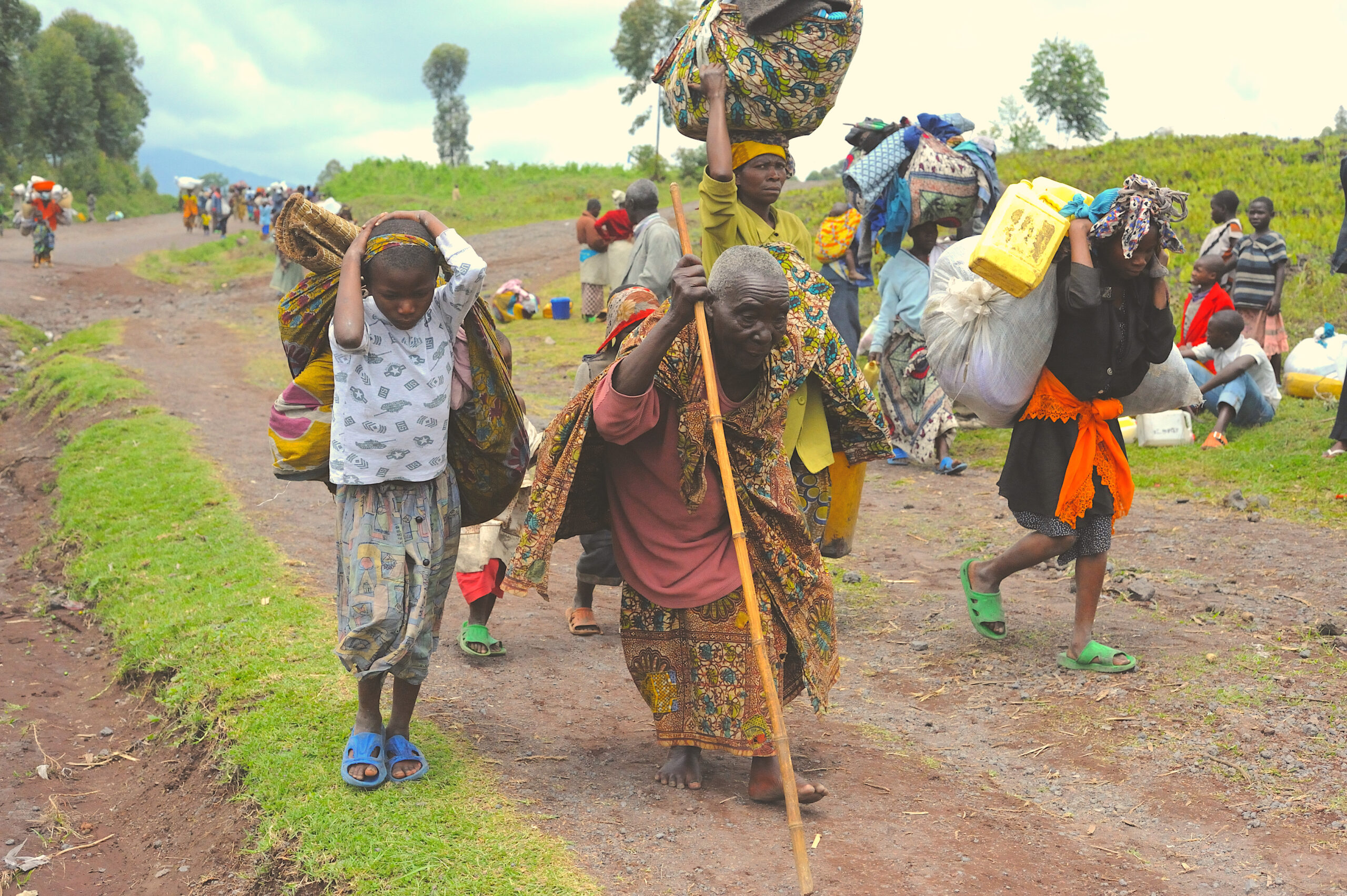
Villagers fleeing gunfire in a camp for internally displaced persons during the 2008 Nord-Kivu war in the DRC. (Julien Harneis,CC BY-SA 2.0, Wikimedia Commons)
At least 100 million people have been forced to flee their homes due to violence, persecution, or other forms of public disorder over the last decade, according to UNHCR, the United Nations refugee agency. That’s about one in every 97 people on the planet, roughly 1 percent of humanity. If such war victims had been given their own state to homestead, it would be the 14th largest nation, population-wise, in the world.
By the end of June, according to the Internal Displacement Monitoring Center, an additional 4.8 million people had been uprooted by conflict, with the most devastating increases in Syria, the Democratic Republic of Congo, and Burkina Faso. Yet, as dismal as these numbers may be, they’re set to be dwarfed by people displaced by another signature story of our time: climate change.
Already, shocking numbers have been put to flight by fires, derechos and super storms, and so much worse is yet to come, according to experts. A recent forecast suggests that, by the year 2050, the number of people driven from their homes by ecological catastrophes could be 900 percent greater than the 100 million forced to flee conflicts over the last decade.
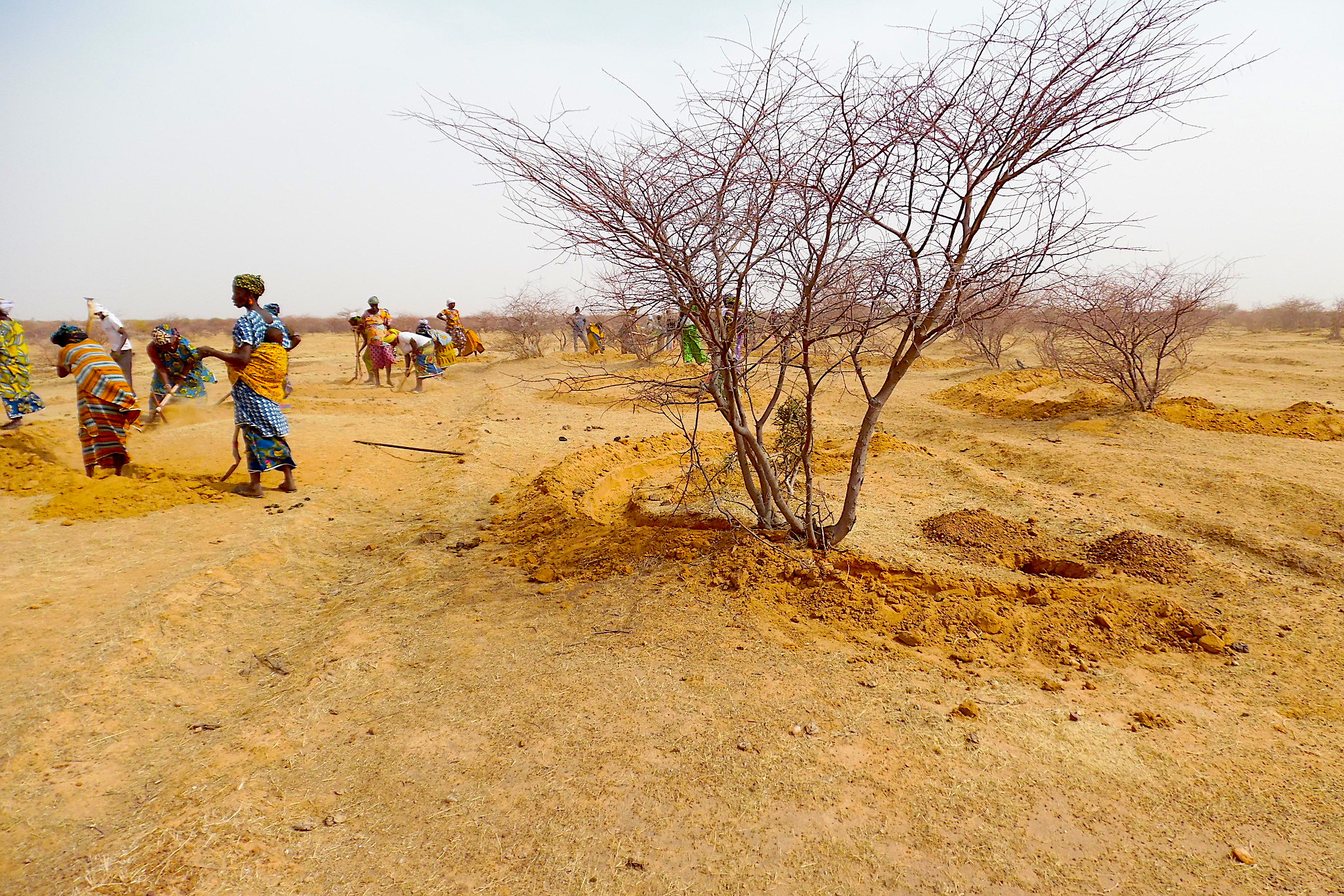
Planting trees to combat desertification with water harvesting ditch, Dori, Burkina Faso. (Water Alternatives, Flickr, CC BY-NC 2.0)
Worse Than World War II
Women, children, and men driven from their homes by conflict have been a defining feature of modern warfare. For almost a century now, combat correspondents have witnessed such scenes again and again. “Newly routed civilians, now homeless like the others with no idea of where they would next sleep or eat, with all their future lives an uncertainty, trudged back from the fighting zone,” the legendary Eric Sevareid reported, while covering Italy for CBS News during World War II. “A dust-covered girl clung desperately to a heavy, squirming burlap sack. The pig inside was squealing faintly. Tears made streaks down the girl’s face. No one moved to help her…”
The Second World War was a cataclysmic conflagration involving 70 nations and 70 million combatants. Fighting stretched across three continents in unparalleled destructive fury, including terror bombing, countless massacres, two atomic attacks, and the killing of 60 million people, most of them civilians, including 6 million Jews in a genocide known as the Holocaust. Another 60 million were displaced, more than the population of Italy (then the ninth-largest country in the world). An unprecedented global war causing unimaginable suffering, it nonetheless left far fewer people homeless than the 79.5 million displaced by conflicts and crises as 2019 ended.

War refugees on a French road, June 1940. (Bundesarchiv, CC-BY-SA 3.0, Wikimedia Commons)
How can violence-displaced people already exceed World War II’s total by almost 20 million (without even counting the nearly 5 million more added in the first half of 2020)?
The answer: these days, you can’t go home again.
In May 1945, the war in Europe came to an end. By the beginning of September, the war in the Pacific was over, too. A month later, most of Europe’s displaced — including more than 2 million refugees from the Soviet Union, 1.5 million French, 586,000 Italians, 274,000 Dutch, and hundreds of thousands of Belgians, Yugoslavs, Czechs, Poles, and others — had already returned home. A little more than a million people, mostly Eastern Europeans, still found themselves stranded in camps overseen by occupying forces and the United Nations.
Today, according to UNHCR, ever fewer war refugees and IDPs are able to rebuild their lives. In the 1990s, an average of 1.5 million refugees were able to return home annually. For the last 10 years, that number has dropped to around 385,000. Today, about 77 percent of the world’s refugees are trapped in long-term displacement situations thanks to forever wars like the conflict in Afghanistan that, in its multiple iterations, is now in its sixth decade.
War on (of & for) Terror
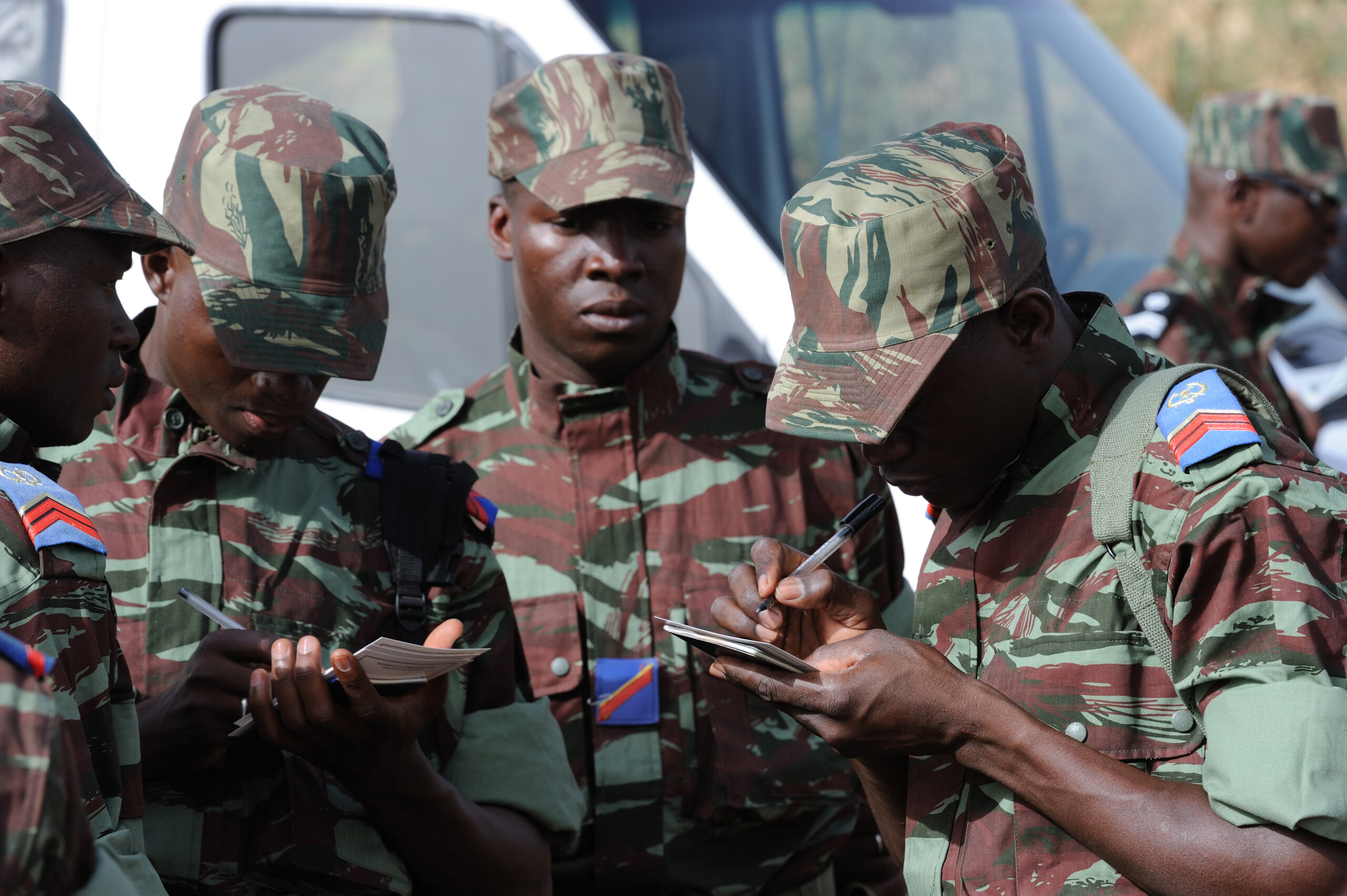
Burkinabe soldiers complete paperwork in Ouagadougou, Burkino Faso, before deploying to Mali for a counter-terrorism exercise, May 1, 2010. (U.S. Air Force, Jeremiah Erickson)
One of the most dramatic drivers of displacement over the last 20 years, according to researchers from Brown University’s Costs of War project, has been that conflict in Afghanistan and the seven other “most violent wars the U.S. military has launched or participated in since 2001.” In the wake of the killing of 2,974 people by al-Qaeda militants that Sept. 11 and the decision of George W. Bush’s administration to launch a Global War on Terror, conflicts the United States initiated, escalated, or participated in — specifically, in Afghanistan, Iraq, Libya, Pakistan, the Philippines, Somalia, Syria, and Yemen — have displaced between 37 million and 59 millionpeople.
While U.S. troops have also seen combat in Burkina Faso and Washington has pumped hundreds of millions of dollars of “security assistance” into that country, its displaced aren’t even counted in the Costs of War tally. And yet there’s a clear link between the U.S.-backed overthrow of Libya’s autocrat, Muammar Qaddafi, in 2011 and Burkina Faso’s desperate state today. “Ever since the West assassinated Qaddafi, and I’m conscious of using that particular word, Libya has been completely destabilized,” Chérif Sy, Burkina Faso’s defense minister, explained in a 2019 interview. “While at the same time it was the country with the most guns. It has become an arms cache for the region.”
Those arms helped destabilize neighboring Mali and led to a 2012 coup by a U.S.-trained officer. Two years later, another U.S.-trained officer seized power in Burkina Faso during a popular uprising. This year, yet another U.S.-trained officer overthrew yet another government in Mali. All the while, terrorist attacks have been ravaging the region. “The Sahel has seen the most dramatic escalation of violence since mid-2017,” according to a July report by the Africa Center for Strategic Studies, a Defense Department research institution.
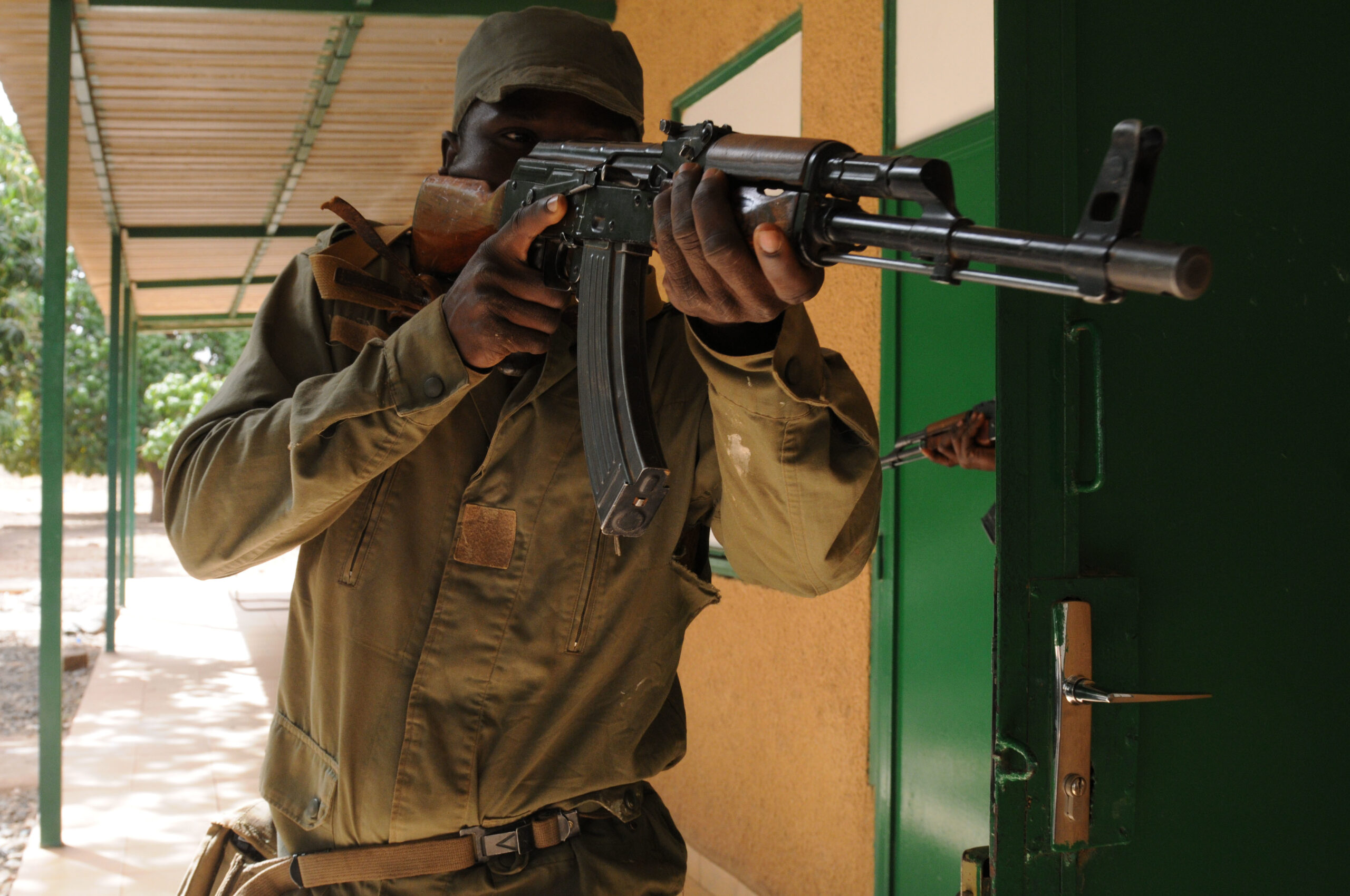
A Burkina Faso soldier after a close-quarter combat drill March 8, 2017 at Camp Zagre, Burkina Faso. (U.S. Army, Britany Salesman)
In 2005, Burkina Faso didn’t even warrant mention in the “Africa Overview” section of the State Department’s annual report on terrorism. Still, more than 15 separate American security assistance programs were brought to bear there — about $100 million in the last two years alone. Meanwhile, militant Islamist violence in the country has skyrocketed from just three attacks in 2015 to 516 in the 12 months from mid-2019 to mid-2020, according to the Pentagon’s Africa Center.
Compounding Crises to Come
The violence in Burkina Faso has led to a cascade of compounding crises. Around a million Burkinabe are now displaced, a 1,500 percent increase since last January, and the number only keeps rising. So do the attacks and the fatalities. And this is just the beginning, since Burkina Faso finds itself on the frontlines of yet another crisis, a global disaster that’s expected to generate levels of displacement that will dwarf today’s historic figures.
Burkina Faso has been battered by desertification and environmental degradation since at least the 1960s. In 1973, a drought led to the deaths of 100,000 people there and in five other nations of the Sahel.
Severe drought and hunger struck again in the mid-1980s and aid agencies began privately warning that those living in the north of the country would need to move southward as farming became ever less feasible. By the early 2000s, despite persistent droughts, the cattle population of the country had doubled, leading to increasing ethnic conflict between Mossi farmers and Fulani cattle herders. The war now tearing the country apart largely divides along those same ethnic lines.
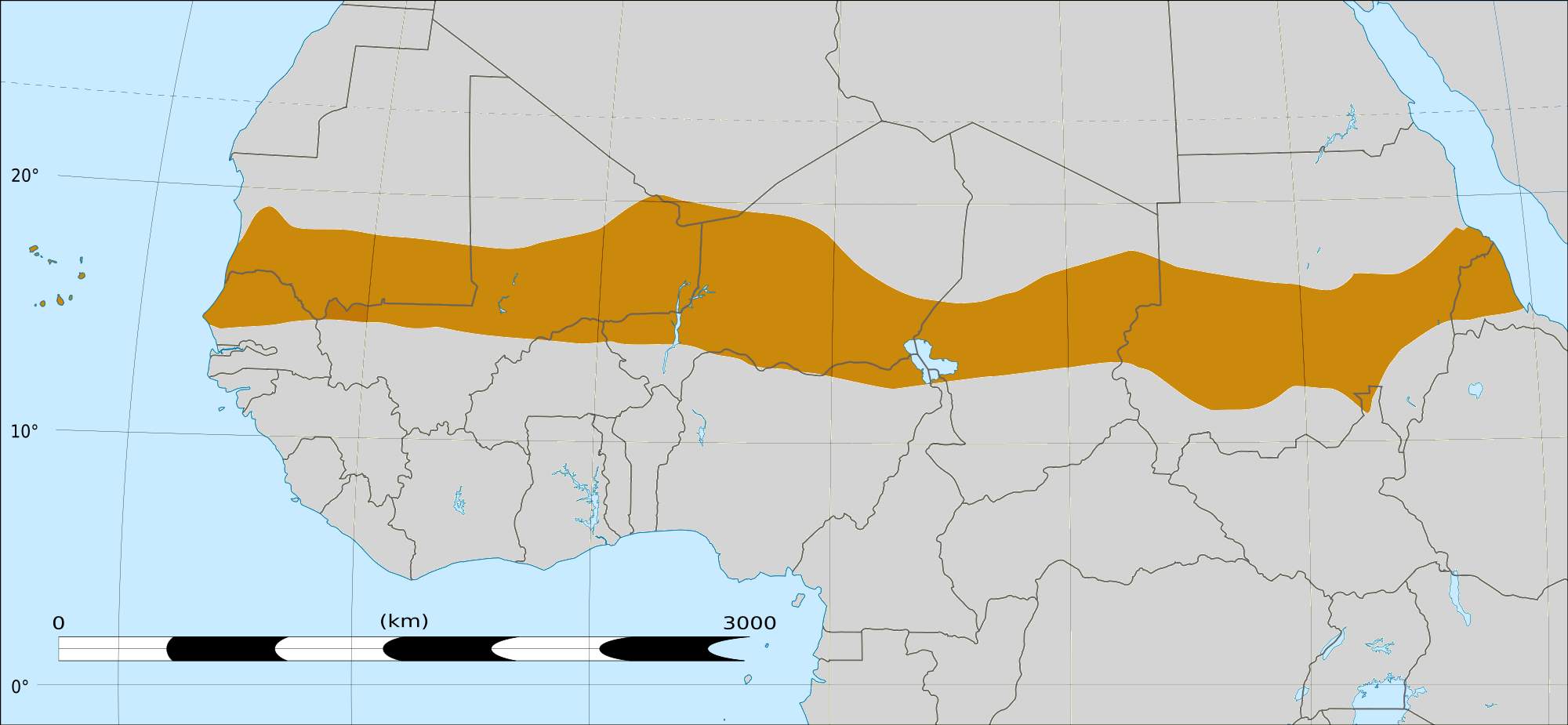
The Sahel forms a belt up to 1000 km wide, spanning Africa from the Atlantic Ocean to the Red Sea. (Felix Koenig, CC BY-SA 4.0, Wikimedia Commons)
In 2010, Bassiaka Dao, the president of the confederation of farmers in Burkina Faso, told the United Nations news agency, IRIN, that the impacts of climate change had been noticeable for years and were getting worse. As the decade wore on, rising temperatures and new rainfall patterns — droughts followed by flash floods — increasingly drove farmers from their villages, while desertification swelled the populations of urban centers.
In a report published earlier this year, William Chemaly of the Global Protection Cluster, a network of nongovernmental organizations, international aid groups, and United Nations agencies, noted that in Burkina Faso “climate change is crippling livelihoods, exacerbating food insecurity, and intensifying armed conflict and violent extremism.”
Sitting at the edge of the Sahara Desert, the country has long faced ecological adversity that’s only worsening as the frontlines of climate change steadily spread across the planet. Forecasts now warn of increasing ecological disasters and resource wars supercharging the already surging phenomenon of global displacement.
According to a recent report by the Institute for Economics and Peace, a think tank that produces annual global terrorism and peace indexes, 2 billion people already face uncertain access to sufficient food — a number set to jump to 3.5 billion by 2050. Another billion “live in countries that do not have the current resilience to deal with the ecological changes they are expected to face in the future.” The report warns that the global climate crisis may displace as many as 1.2 billion people by 2050.
On the Road to Kaya
I don’t know what happened to the mother and two children I spotted on the road to Kaya. If they ended up like the scores of people I spoke with in that market town, now bulging with displaced people, they’re facing a difficult time. Rents are high, jobs scarce, government assistance all but nil. People there are living on the edge of catastrophe, dependent on relatives and the kindness of new neighbors with little to spare themselves. Some, driven by want, are even heading back into the conflict zone, risking death to gather firewood.
Kaya can’t deal with the massive influx of people forced from their homes by Islamist militants. Burkina Faso can’t deal with the one million people already displaced by conflict. And the world can’t deal with the almost 80 million people already driven from their homes by violence. So how will we cope with 1.2 billion people — nearly the population of China or India — likely to be displaced by climate driven-conflicts, water wars, increasing ecological devastation, and other unnatural disasters in the next 30 years?
In the decades ahead, ever more of us will find ourselves on roads like the one to Kaya, running from the devastation of raging wildfires or uncontrolled floodwaters, successive hurricanes or supercharged cyclones, withering droughts, spiraling conflicts, or the next life-altering pandemic. As a reporter, I’ve already been on that road. Pray you’re the one speeding by in the four-wheel-drive vehicle and not the one choking in the dust, driving the donkey cart.
Nick Turse is the managing editor of TomDispatch. He is the author of Next Time They’ll Come to Count the Dead: War and Survival in South Sudan and the award-winning Kill Anything That Moves: The Real American War in Vietnam.
This article is from TomDispatch.com. It was reported in partnership with Brown University’s Costs of War Project and Type Investigations.
The views expressed are solely those of the author and may or may not reflect those of Consortium News.
Please Contribute to Consortium News
Donate securely with
Click on ‘Return to PayPal’ here.
Or securely by credit card or check by clicking the red button:



Modern warfare, as practiced by the United States, is almost defined by the killing of civilians.
What else could you expect when your favorite method is aerial bombardment, either with planes of missiles.
American saturation bombing of North Korea killed about one-fifth of the country’s entire population. And that is a Pentagon estimate.
In Vietnam, about another 3 million were added to the toll .
And that wasn’t a million soldiers who died in the invasion of Iraq.
I’m not sure that most Americans even understand, or want to understand, how indescribably brutal the Pentagon’s imperial wars have been.
Sometimes there is a “convergence” and sometimes there is a “confluence”. The first speaks to moving towards uniformity, the second is more about flowing together. Personally, I think for this article, the second word would have been better in the headline, but I ain’t no editor and so what do I know. I respect the editors at this site and appreciate they are moderating the discussion.
You know when I was a kid in the 70’s and saw this sort of thing on the news I naively thought that soon it would be coming to end. Why not is the thought that would be in any kid’s mind. And then I went outside and played with my friends.
As somebody a bit older now, I can’t deny, I just can’t believe this same old story is being told again. Well let me tell you something. This old story has been DEBUNKED. It is time for this story to END – don’t you think?
Please, really, for the sake of the innocent. Lets put an end to all this needless suffering.
-Ken